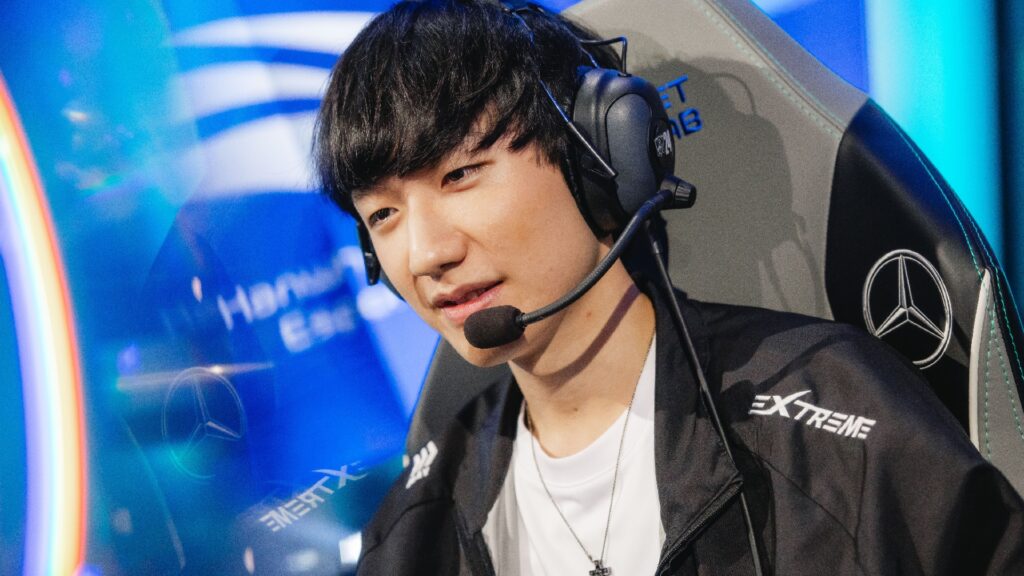The Five Most Picked Champions at LoL First Stand 2025
We are just days out of the completion of the inaugural First Stand, a new League of Legends international tournament bringing the champions from each region together for a fast-paced event. Congratulations to the LCK’s Hanwha Life who was able to take down Karmine Corp 3-1 in the grand finals.
First Stand was a first for many things, including Fearless Draft being used for the first time in a Riot-sanctioned international event. There were several fun champions on display, with Hanwha Life having some fun with the competition by bringing out some unique drafts. But which champions were picked the most? Stay tuned as we tell you the first most picked champions at First Stand 2025.
Ezreal – 13 games

Image credit: Riot Games
Ezreal in the right hands is one of the strongest ADC’s in League of Legends. He can hold his own, quite literally, in the early game, while being a demon in the late-game. Ezreal was picked the most of any League of Legends champion at First Stand 2025, but life wasn’t sunshine and rainbows for the explorer. Ezreal had a 46% win rate at First Stand, with many of those losses coming at the hands of Western players.
This isn’t to say Yeon or Caliste are not capable of playing Ezreal, the fact of the matter is he is a difficult champion to execute against the best teams in the world, meaning if the game goes south quickly against a top team, Ezreal will do next to nothing.
Vi – 11 games

Credit: Riot Games
Vi is in a peculiar place when it comes to her contribution to First Stand 2025. The Arcane star was the second-most-picked champion at the international event with 11 games, three more than any jungler with Maokai, Sejuani, Xin Zhao, and Skarner all coming in at eight games a piece.
Vi is peculiar because the champions mentioned prior have all been considered the premium jungle picks in the meta over the last few weeks in Fearless Draft, which often leads to Vi is one of the remaining junglers for players to pick from. This seemed to be the case with Hanwha Life most of the time, Peanut played the champion five times, more than any player at the tournament.
Leona – 11 games

Credit: Riot Games
Leona is tied at Vi with 11 games a piece at First Stand 2025. This is another case of a champion being wildly popular but does not perform well on the international stage. This is the case with Leona, the champion who has a 45% win rate at First Stand, with CoreJJ and Crisp going a combined 0-3 on Leona while Targamas had a rather successful time with a 60% WR.
With Top Esports and Team Liquid being two of the worst-performing teams at the event, there’s no surprise that their performances on Leona were not the best given she relies heavily on players and teams that can perform team fights to a good level.
Varus – 10 games

Image Credits | Riot Games
Out of all the champions on this list, Varus has by far had the most success on the international stage with seven games won out of ten at First Stand 2025. This was a power pick that was amongst the most banned in the tournament, and when it was played, Varus certainly packed a punch.
Hanwha Life’s ADC had a monstrous performance on this champion whenever he had the chance to, rocking an 8.3 KD and a 3-0 record, you can see why Viper did not get many games on Varus at the tournament. The only player who did not have at minimum a 50% winrate is JackeyLove, with the TES ADC going 1-2.
Taliyah – 9 games

Image: Riot Games
While there were several champions that had 9 games, Taliyah featured the most in the pick and ban phase with 9 games played and 9 bans throughout the tournament. Allthough it was very close between Taliyah, Rell, Aurora, and Azir, it was Taliyah who just edged out.
Taliyah had more priority by the Western teams at the tournament, with APA and Vladi having multiple games on the champion. She is able to get across the map quickly, set up fights herself, and wall out the enemy team from contesting an objective. It was interesting to see that the Eastern teams had no interest in picking up the champion, both in the jungle and in the mid lane.














